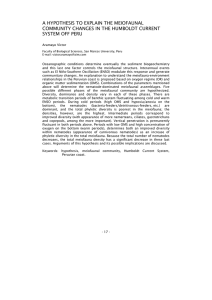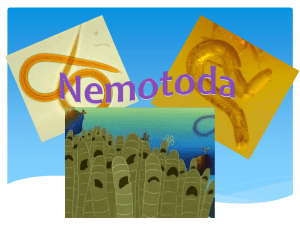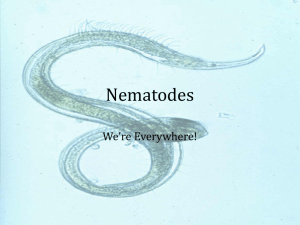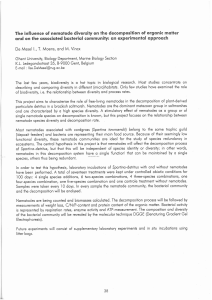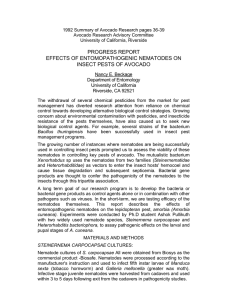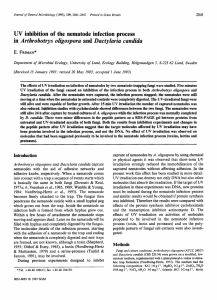ROLE OF ESTUARINE NEMATODE ASSEMBLAGES IN ESTUARY (MONDEGO ESTUARY, PORTUGAL): TEMPORAL
advertisement
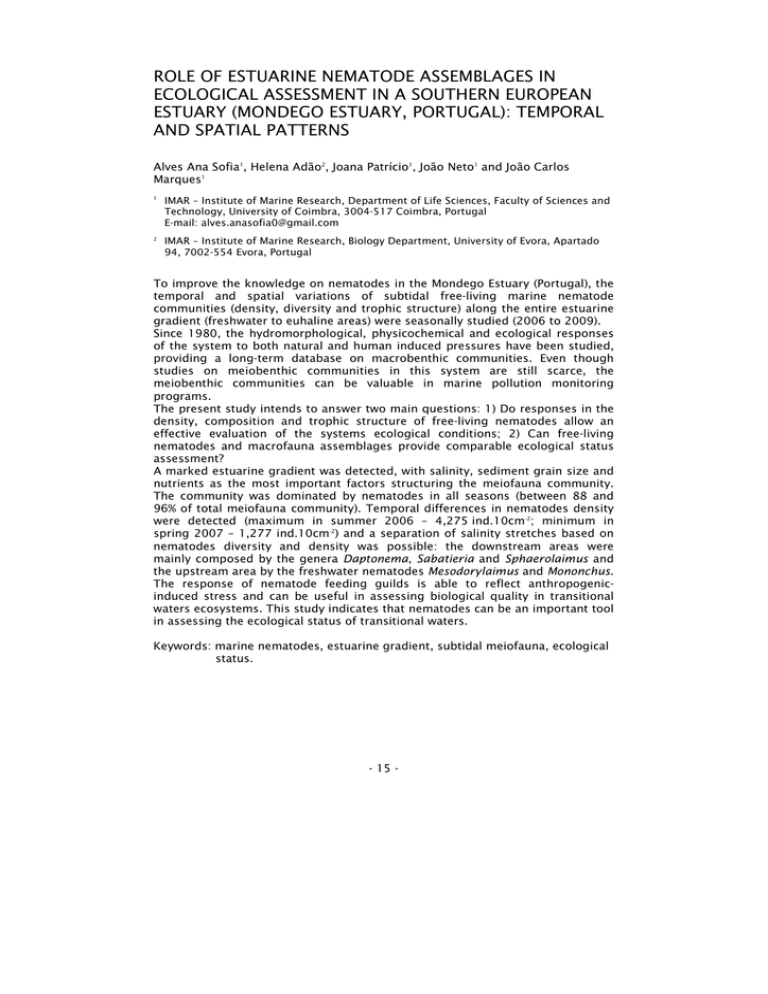
ROLE OF ESTUARINE NEMATODE ASSEMBLAGES IN ECOLOGICAL ASSESSMENT IN A SOUTHERN EUROPEAN ESTUARY (MONDEGO ESTUARY, PORTUGAL): TEMPORAL AND SPATIAL PATTERNS Alves Ana Sofia1, Helena Adão2, Joana Patrício1, João Neto1 and João Carlos Marques1 1 IMAR – Institute of Marine Research, Department of Life Sciences, Faculty of Sciences and Technology, University of Coimbra, 3004-517 Coimbra, Portugal E-mail: alves.anasofia0@gmail.com 2 IMAR – Institute of Marine Research, Biology Department, University of Evora, Apartado 94, 7002-554 Evora, Portugal To improve the knowledge on nematodes in the Mondego Estuary (Portugal), the temporal and spatial variations of subtidal free-living marine nematode communities (density, diversity and trophic structure) along the entire estuarine gradient (freshwater to euhaline areas) were seasonally studied (2006 to 2009). Since 1980, the hydromorphological, physicochemical and ecological responses of the system to both natural and human induced pressures have been studied, providing a long-term database on macrobenthic communities. Even though studies on meiobenthic communities in this system are still scarce, the meiobenthic communities can be valuable in marine pollution monitoring programs. The present study intends to answer two main questions: 1) Do responses in the density, composition and trophic structure of free-living nematodes allow an effective evaluation of the systems ecological conditions; 2) Can free-living nematodes and macrofauna assemblages provide comparable ecological status assessment? A marked estuarine gradient was detected, with salinity, sediment grain size and nutrients as the most important factors structuring the meiofauna community. The community was dominated by nematodes in all seasons (between 88 and 96% of total meiofauna community). Temporal differences in nematodes density were detected (maximum in summer 2006 – 4,275 ind.10cm-2; minimum in spring 2007 – 1,277 ind.10cm-2) and a separation of salinity stretches based on nematodes diversity and density was possible: the downstream areas were mainly composed by the genera Daptonema, Sabatieria and Sphaerolaimus and the upstream area by the freshwater nematodes Mesodorylaimus and Mononchus. The response of nematode feeding guilds is able to reflect anthropogenicinduced stress and can be useful in assessing biological quality in transitional waters ecosystems. This study indicates that nematodes can be an important tool in assessing the ecological status of transitional waters. Keywords: marine nematodes, estuarine gradient, subtidal meiofauna, ecological status. - 15 -
